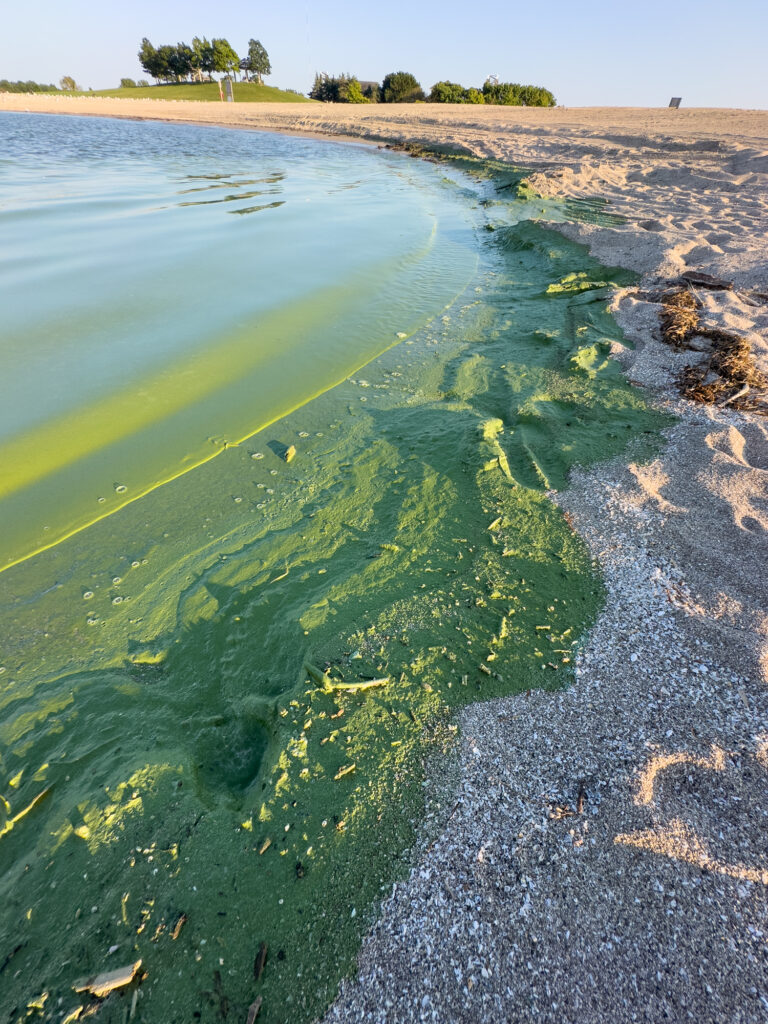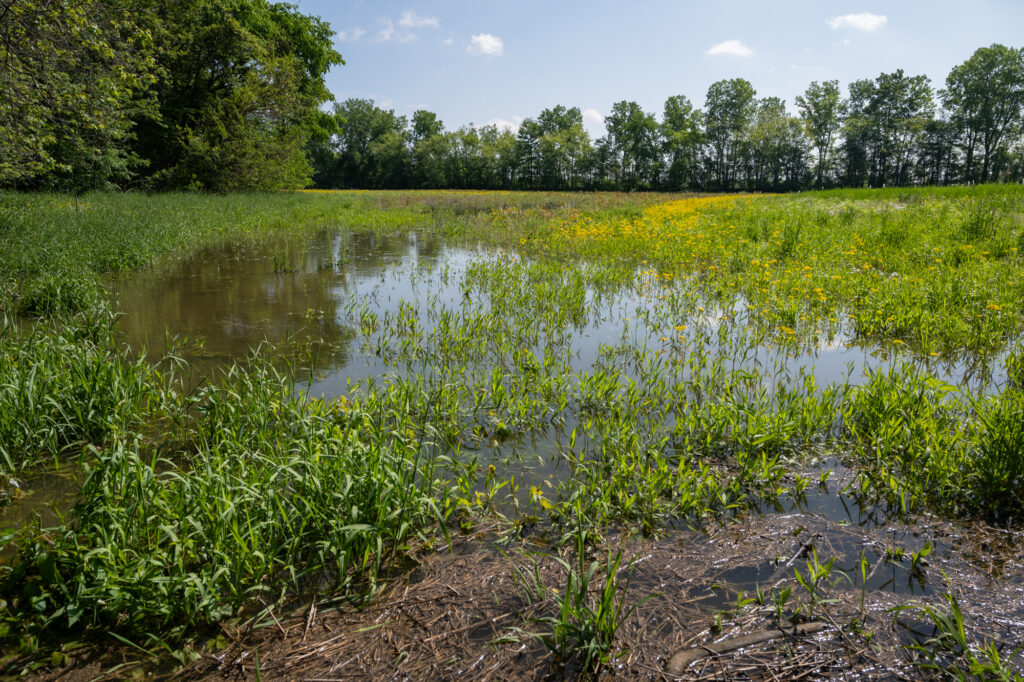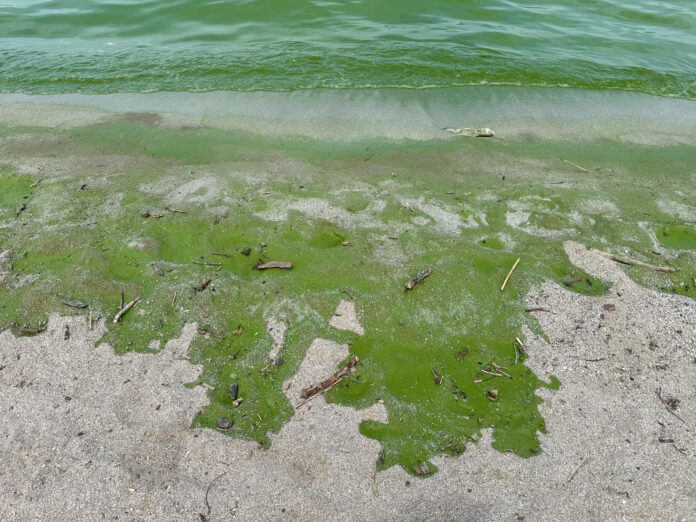Will pumping money into wetlands yield clean water?
TOLEDO – There are mixed reviews of Governor Mike DeWine’s H2Ohio program among area conservation groups, Lucas County commissioners and Toledo Mayor Wade Kapszukiewicz.
DeWine’s H2Ohio program, which launched in 2019, is a comprehensive water quality initiative that is “working to strategically address serious water issues that have been building in Ohio for decades. Such problems include harmful algal blooms on Lake Erie caused by phosphorus runoff from farm fertilizer, failing drinking water, wastewater, and home sewage treatment systems due to aging infrastructure, and lead contamination from old water pipes and fixtures,” according to the Ohio Department of Natural Resources, Ohio Department of Agriculture, and the Ohio Environmental Protection Agency.

$270 million has been invested in this program for 2024-2025.
· $60.7 million to the Ohio Department of Agriculture to support and research best management practices in the Western Lake Erie basin and to expand the program statewide
· $46.6 million to the Ohio Department of Natural Resources for continued investment in creation, restoration, and enhancement of wetlands
· $27.5 million to the Ohio Environmental Protection Agency to improve the quality of life for Ohioans by ensuring safe drinking water and protecting public health
· $46.6 million to the H2Ohio Rivers Initiative to ensure community health, support economic development, and provide opportunities for recreation across the state
· $131,250 to the Ohio Lake Erie Commission to continue funding accountability tools to evaluate H2Ohio efforts
One of the controversial parts of the H2Ohio initiative is the $60.7 million spent on the Department of Agriculture. With the agricultural leg of the initiative, farmers can enroll in the H2Ohio program and receive funds by participating in a Voluntary Nutrient Management program (VNMP). The lack of regulations around the initiative has some area leaders up in arms and worried about Lake Erie’s water quality.
“The governor has a program called H2Ohio, which basically just throws good money after bad,” said Kapszukiewicz at a Lake Erie Waterkeepers event this past month.
Kapszukiewicz said that H2Ohio throws money at agricultural interests to encourage them to do the right thing. The problem will not be solved until there are some meaningful regulations and restrictions on the major manure-producing agricultural interests.
“I’m not talking about mom-and-pop farmers; I’m talking about mega Death Star entities that generate incredible amounts of pollution and manure that go untreated into Lake Erie every year,” said Kapszukiewicz.
How much manure?
Sherry Flemming of Williams County reported that “in our county alone, we have six permitted facilities that house over 30,000 hogs and two permitted dairies that have over 6,000 cows. These operations alone produce 90 million gallons of liquid manure a year, and this doesn’t even count the CAFOs (Concentrated Animal Feeding Operations) that operate below the permitting level.”
“Other states that have regulations on concentrated feeding operations have moved that industry out of those states and into Ohio,” said Lucas County commissioner Lisa Sobecki. “That’s one of the reasons why we are bringing the lawsuit against the EPA. We’ve partnered with the city in doing that.”
According to a complaint filed with the United States District Court for the Northern District of Ohio Western Division on May 1, 2024, The Board of Lucas County Commissioners, City of Toledo and Environmental Law & Policy Center claim the United States Environmental Protection Agency has failed to comply with its obligations under the Clean Water Act to prevent harmful algal blooms in western Lake Erie.
“The regional director’s office for the federal EPA is in Chicago,” said Sobecki. “And I will guarantee you if they looked out over their lake and it looked like our lake looks here, they’d be all over it. So, come on, treat this like this is your home and help us get this cleaned up. Be a partner. The residents have done their part as taxpayers, but the lawmakers have not.”
But with the criticism of the program also comes praise.
“Lake Erie has been impacted for a long time, a couple hundred years, from the loss of wetlands around it,” said Black Swamp Conservancy Conservation manager Melanie Coulter. “We need to get back some of the wetland functions that were lost.”

Black Swamp Conservancy buys farmland and works with initiatives like H2Ohio.
“We change the land from intensive crops back into a native habitat such as a wetland, a forest, or, like the Great Black Swamp, a forest wetland,” said Coulter. “In strategic locations, farmland to wetland will clean the most water.”
Rob Krain, executive director of the Black Swamp Conservancy, said the H2Ohio program is helping make great progress.
“We have been partnering with Ohio Department of Natural Resources (ODNR), providing money for purchasing land and turning it back into natural habitats for water quality and recreation,” said Krain.
In a wetland, sediments and nutrients have a chance to settle at the bottom, and then the vegetation can utilize that settlement for growth. If the wetland isn’t there, that sediment goes into the lake to feed toxic algal blooms instead of the wetland vegetation.
“One of the best things about ODNR’s use of H2Ohio is they have the Lake Erie Aquatic Research Network (LEARN) that are studying these wetlands on the ground,” said Krain. “They are informing us on how to better create these wetland restorations.”
“The reality,” he added, “is the long-term data shows wetlands are the most cost-effective, easiest ways to help with water quality. Wetlands will play a significant role in solving this problem.”
“We take direct action and what we are doing is improving water quality. Using Mother Nature’s defenses to help solve this problem is a critical piece of this puzzle,” said Krain.





















